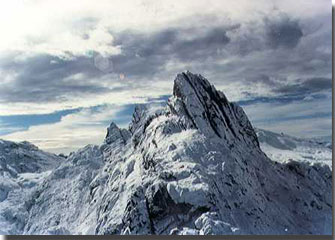
Lorentz
National Park/World Heritage

 Lorentz is the Pacific Basin's most important storehouse of biological
diversity, and contains the most complete range of undisturbed habitats in Irian
Jaya. This project will complete a management plan for the proposed Lorentz
National Park (NP) and play a key role in its implementation. It will also work
towards ensuring that the park is declared a fully gazetted NP, an Association
of South East Asian Nations (ASEAN) Heritage Site, a World Heritage Site, and a
United Nations Educational, Scientific and Cultural Organization (UNESCO)
Biosphere Reserve. In addition to the management plan, the project will be
involved in boundary demarcations, awarenessraising and educational
activities, developing economic incentives for buffer zone communities,
population and socioeconomic surveys, community organizing, tourism planning,
training, and agroforestry.
Lorentz is the Pacific Basin's most important storehouse of biological
diversity, and contains the most complete range of undisturbed habitats in Irian
Jaya. This project will complete a management plan for the proposed Lorentz
National Park (NP) and play a key role in its implementation. It will also work
towards ensuring that the park is declared a fully gazetted NP, an Association
of South East Asian Nations (ASEAN) Heritage Site, a World Heritage Site, and a
United Nations Educational, Scientific and Cultural Organization (UNESCO)
Biosphere Reserve. In addition to the management plan, the project will be
involved in boundary demarcations, awarenessraising and educational
activities, developing economic incentives for buffer zone communities,
population and socioeconomic surveys, community organizing, tourism planning,
training, and agroforestry.
The proposed Lorentz National Park is the most important storehouse of biological diversity in the Pacific Basin. From the equatorial glaciers in the Carstenz Range surrounding Puncak Jaya Peak, to the southern coastline on the Arafura Sea, the reserve contains the most complete range of undisturbed habitats in Irian Jaya, probably in all of Indonesia and possibly in all of the Pacific Basin. These habitats include vast mangrove formations, swampland, lowland, hill and mountain forest types, and the heath, bare rock and equatorial glaciers of the highest alpine areas of Asia. Its biodiversity is without equal in the whole of Indonesia, and includes some 81% of Irian Jaya's mammal species and 65% of its bird species. Endemism is the highest of any reserve in Asia. Its large number of unique biophysical features, its vast size and beautiful physiography, combined with the diversity of its tribal peoples, all make the area one of the world's greatest natural treasures.
Lorentz is currently gazetted as a Strict Nature Reserve, and a change of status to NP has been proposed by the Department of Forestry, with a revised area of 1,907,500ha (reduced from the 2,150,000 ha which was originally proposed by WWF in 1984). The proposal also includes designation of the area as ASEAN and World Heritage sites, and as a UNESCO Biosphere Reserve. To safeguard the area for the future, a conservation management plan, fully integrated with local, provincial and national needs, must be devised before environmental and social conflicts escalate. Implementation of the plan must include community participation. The proposal is timely, as the government of Indonesia has recently initiated a "go east" development strategy in order to attract major investment to eastern Indonesia, especially Irian Jaya. Government funding for infrastructure development has increased considerably. Furthermore, the province is being opened up by road systems and improved transport facilities, which will have a significant impact on conservation areas and issues in the province. It is therefore imperative that priority reserves within the protected areas system be established as functional conservation management units, and that development policy at the implementation (provincial) level respects the importance of sustainability and proper environmental management.
Quoted from WWF International Database
Copyright © 2000 Conservation Science WWF Indonesia-Sahul Bioregion